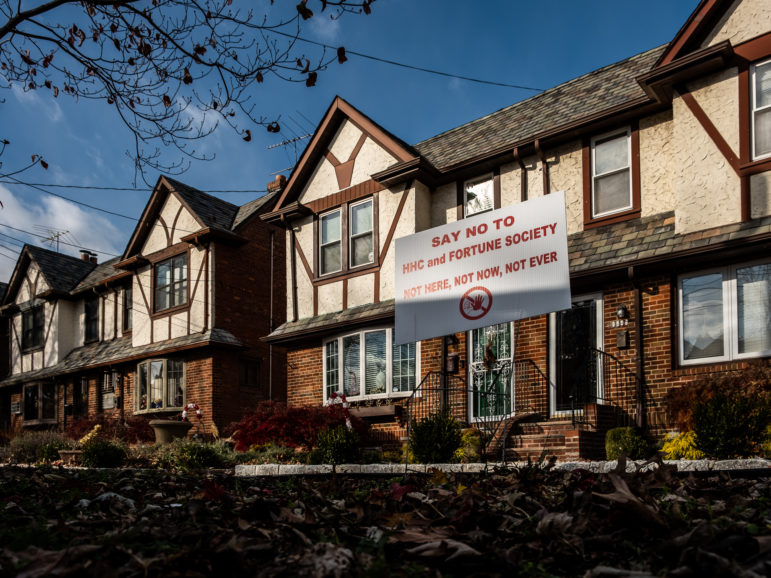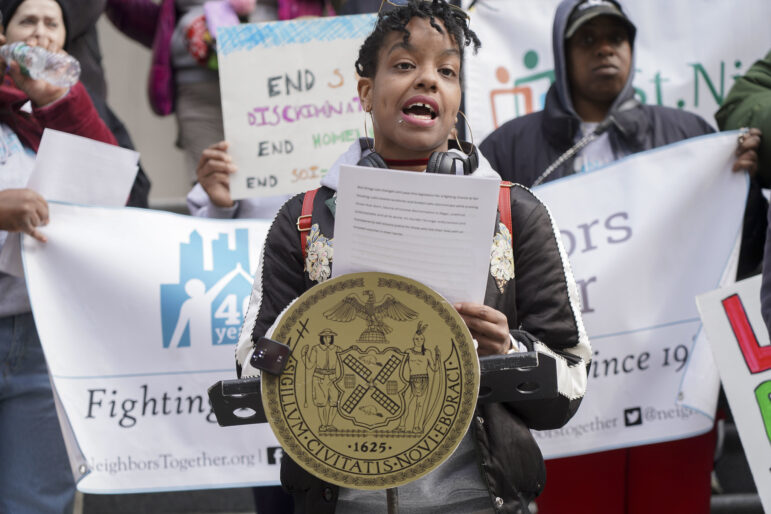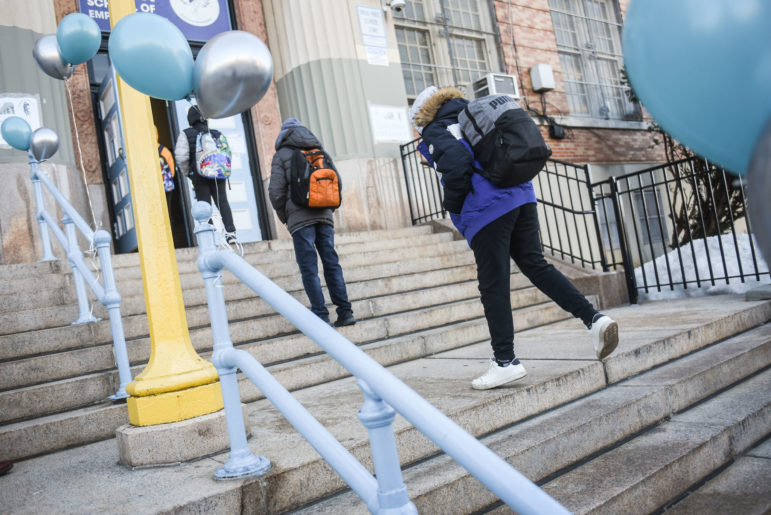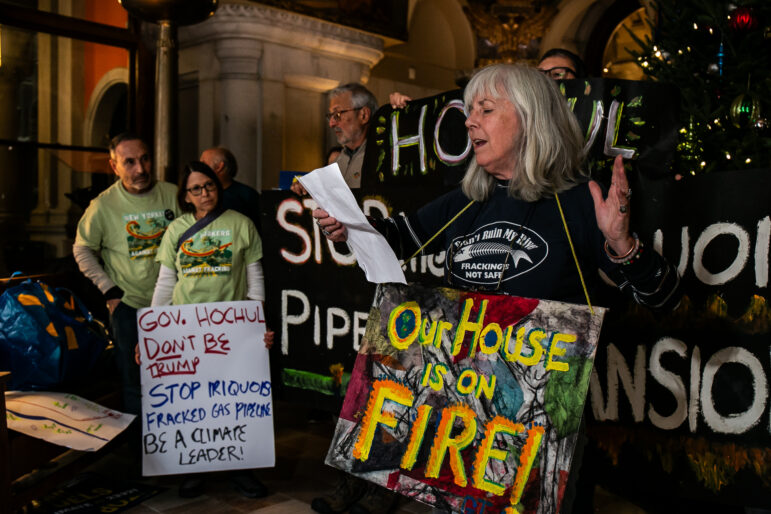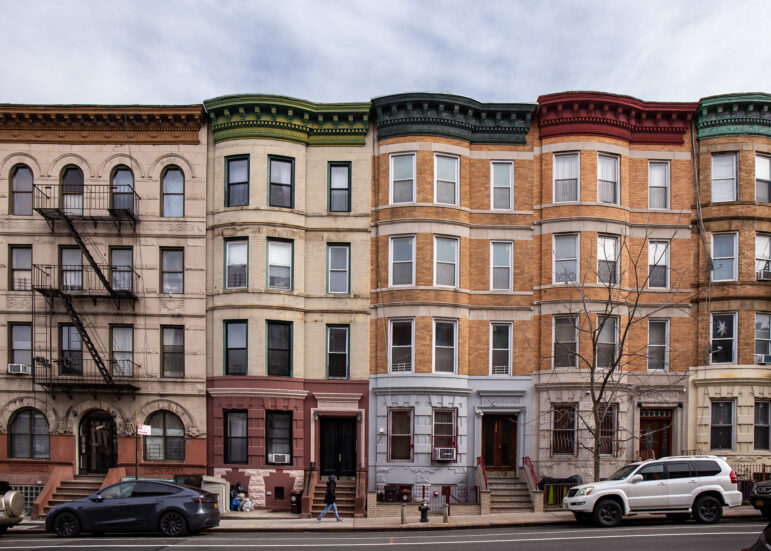“The Uniform Land Use Review Process, or ULURP, is a public and transparent review that injects a degree of democracy into major land use changes by giving communities limited influence over our built environment.”
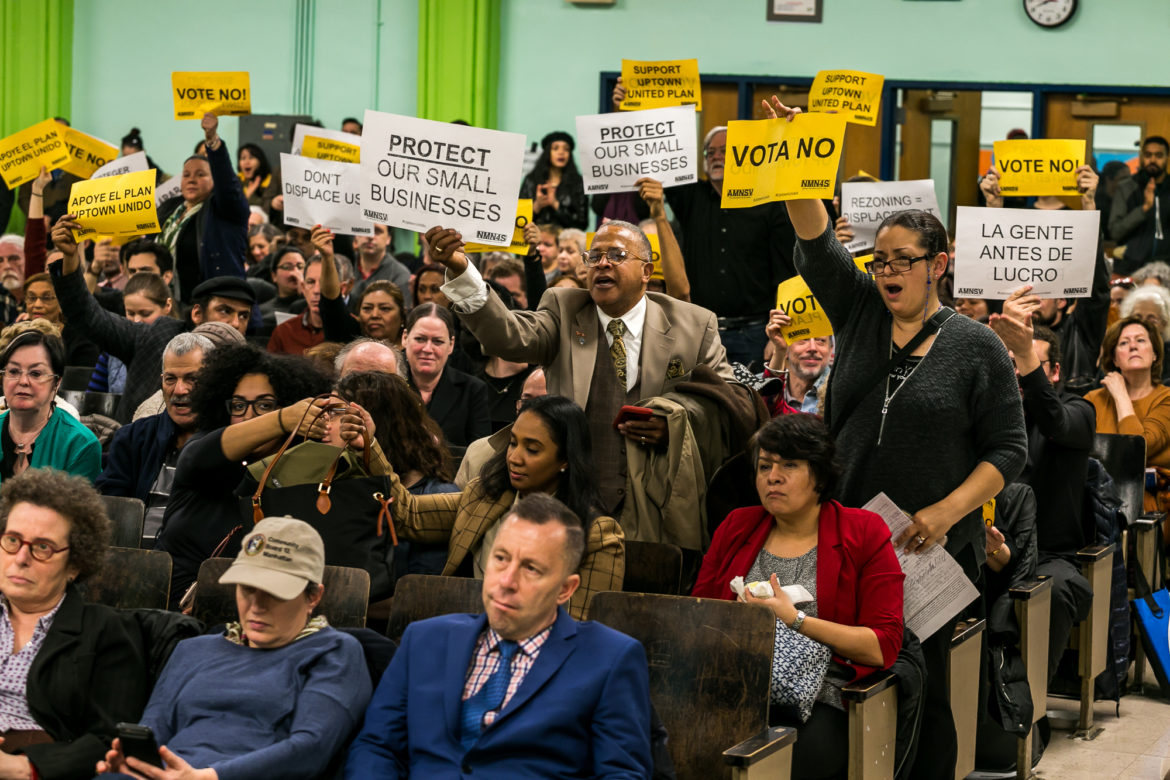
Adi Talwar
Residents hold up signs at a 2018 hearing about the Inwood rezoning.City planners don’t like communities. I learned this lesson in 2015 when I attended the first community engagement session for what would become the Inwood rezoning. The session was run by the New York City Economic Development Corporation (NYCEDC), the murky public development corporation tasked by the de Blasio administration with implementing neighborhood-level rezonings across the city.
The young planner who was given the job of facilitating our small group discussion clearly did not want to be there. I watched her frustration build as her antiseptic renderings of waterfront esplanades and glassy developments, populated by a community of Caucasian cut-out people, were judged to be tone-deaf to the actual needs of our mostly low-income community. Finally, having had enough, she scolded us, “Don’t think you can keep this nice neighborhood all to yourselves!” Everyone left angry. Some of us organized. So began the fight over the future of Inwood.
Contrary to fashionable opinion, communities are rarely able to entirely stop real estate developers that seek rezonings, at least in New York City. The truth is more complicated and often looks something like this: A plan is created behind closed doors by real estate developers and city bureaucrats that gives the developers everything they want.
The plan is then presented to community members, who in turn appeal to their community board, borough president, and city councilmember to negotiate some community benefits and alterations into the plan that hopefully make the final product something everyone can live with. The city councilmember has real negotiating power vis-à-vis the developer because the City Council can reject the plan, and the councilmember is ultimately accountable to voters. The reality of the process isn’t pretty, and nobody gets everything they want, but that’s democracy.
This process has a name: the Uniform Land Use Review Process (ULURP) is a public and transparent review that injects a degree of democracy into major land use changes by giving communities limited influence over our built environment. Real estate developers and the city agency technocrats, who almost always come from the real estate industry and maintain close ties with it, loathe ULURP and the communities that it empowers, and they’ve long wanted to see it dismantled.
They may finally be getting their wish. The New York City Charter Revision Commission, a body consisting largely of real estate industry insiders appointed by a mayor who just saw his corruption indictment disappear thanks to Donald Trump, is seeking a City Charter revision that could significantly diminish, if not entirely abolish, the role communities and our representatives play in determining how our neighborhoods are developed.
Consider this quote from commission member Anita Laremont, a real estate division partner at the law firm of Fried, Frank, Harris, Shriver & Jacobson LLP, and former director of the Department of City Planning, who spoke at the Commission’s first meeting last month, as City Limits reported: “We have a system that really works in a very parochial way, because we have to ask on the neighborhood level about what people will agree to, and it frequently stymies our ability to solve big problems on a citywide basis.”
GK Chesterton is famous for developing the maxim that before you tear down a fence, you should understand why it was put up in the first place. The idea that local communities should have a say in land use development, codified by the addition of ULURP to the City Charter in 1975, was a response to a series of catastrophes that took place during the period of Urban Renewal from 1949 to 1974. These include the demolition of San Juan Hill, a neighborhood of 17,000 mostly Black and Puerto Rican residents, to build Lincoln Center; the destruction of the Tremont neighborhood to build the Cross Bronx Expressway; and the attempt to demolish Greenwich Village to build another expressway.
At the time, all these projects were enacted by steamrolling, both literally and figuratively, over communities, because democratically unaccountable bureaucrats like Robert Moses had the unchecked power to “solve big problems on a citywide basis,” to use Ms. Laremont’s terminology.
The Inwood rezoning was passed in 2018, and I invite anyone who thinks community opposition stops development to walk down West 207th Street toward the University Heights Bridge and see some of the 1,500* new units that are being built—with another 2,400 projected—many of them still unaffordable to existing residents.
Many in the community, including me, still think it is a bad plan, but it could have been worse. Community members were able to use the ULURP process to fight for deeper levels of affordable housing in the new developments, as well as zoning protections for the existing stock.
It gave us just enough power to get something out of people who are determined to give nothing. Don’t let them take that power away from us.
Graham Ciraulo is a housing advocate in Upper Manhattan.
*This post has been updated to correct a typo; there are 1,500 units currently being built in the Inwood rezoning area, not 15,000.


